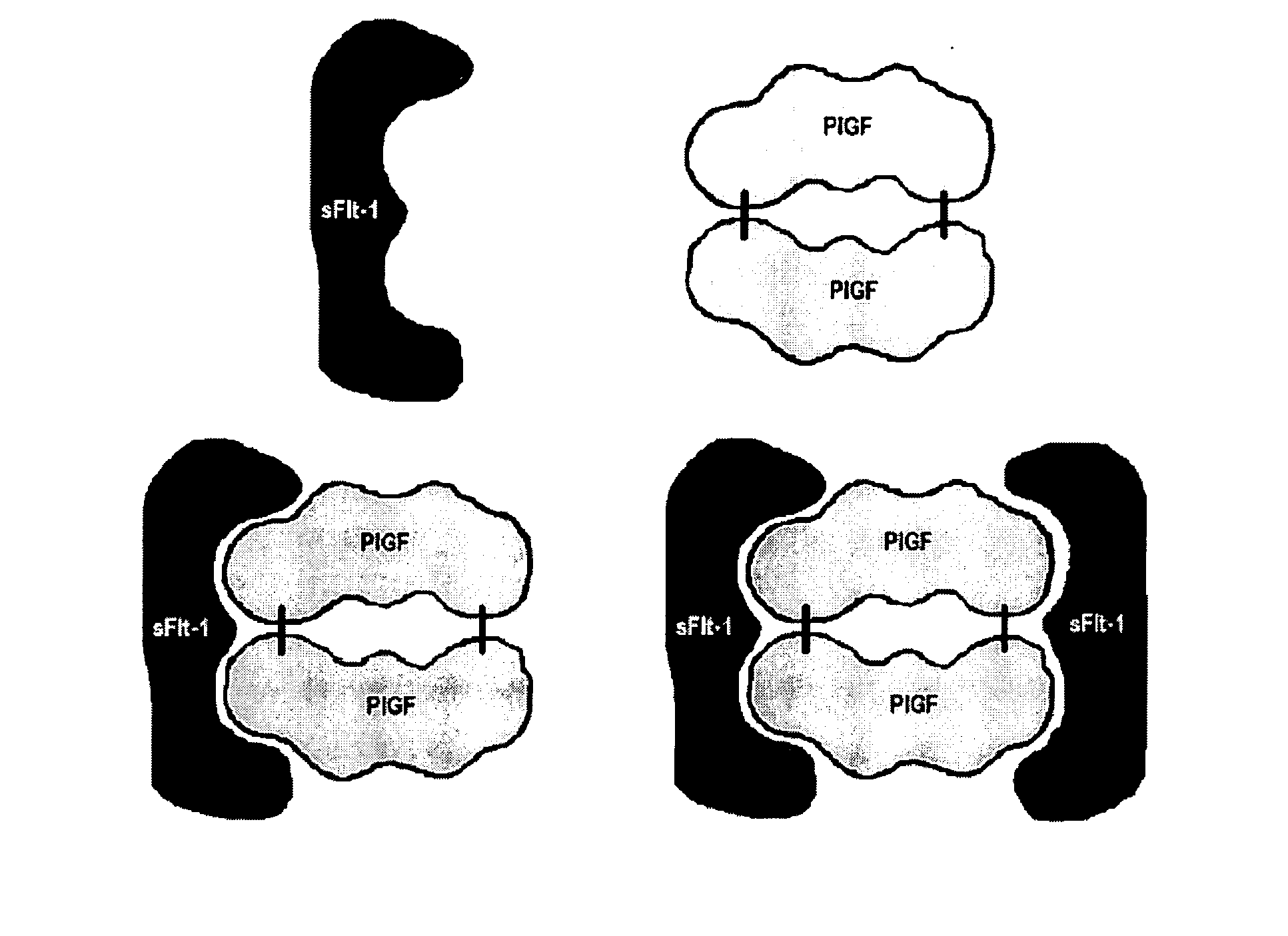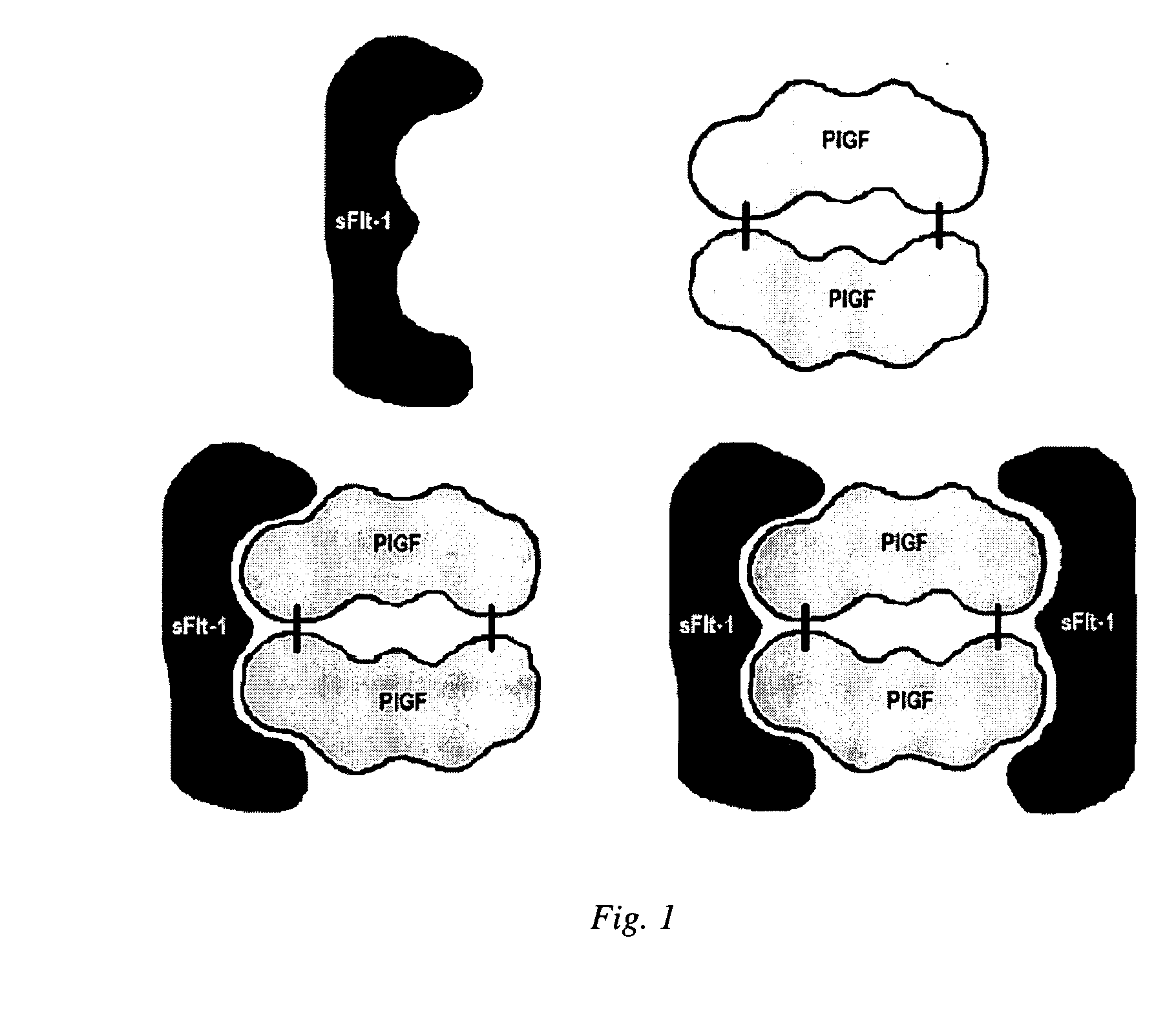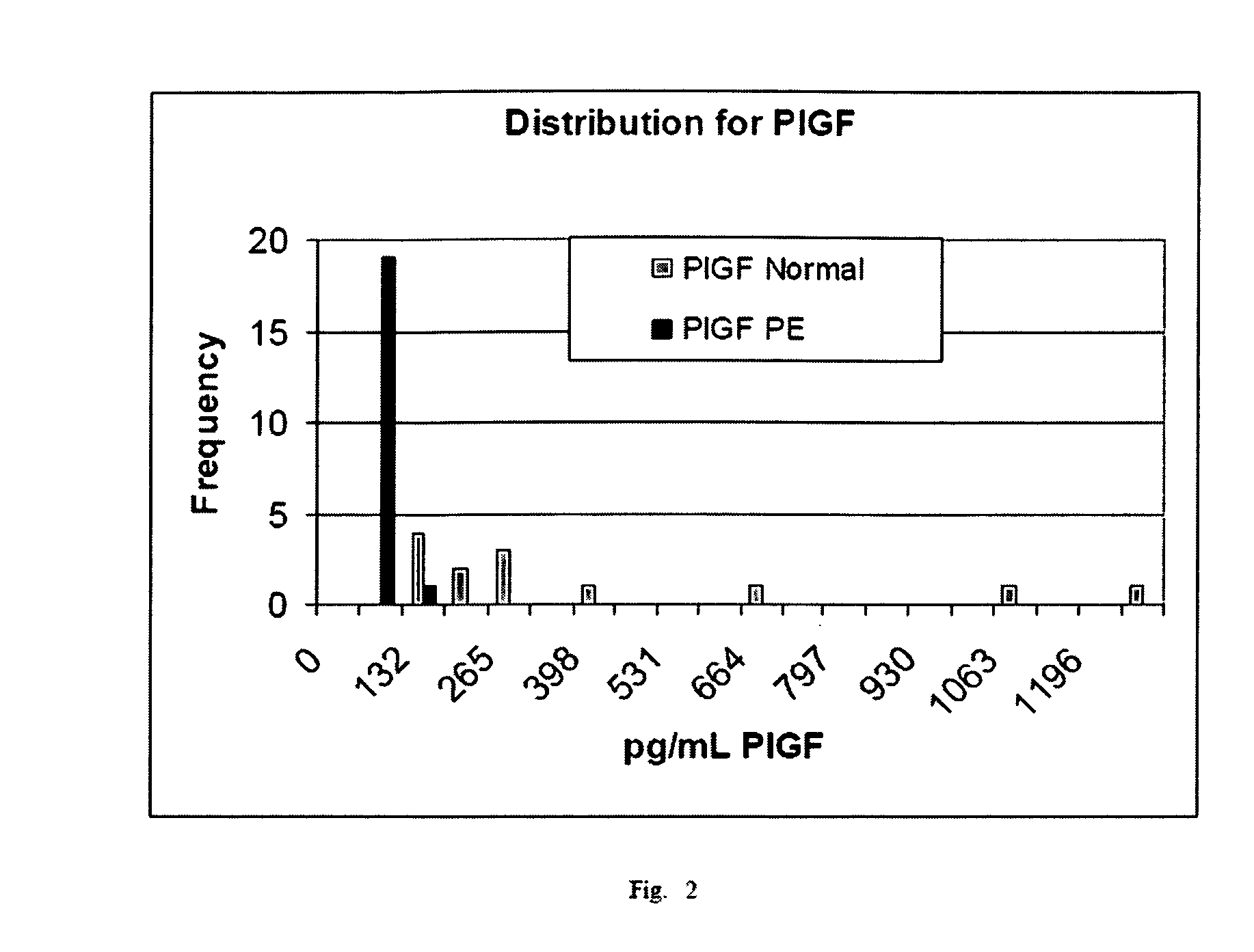Diagnostic method for proteinaceous binding pairs, cardiovascular conditions and preeclampsia
a proteinaceous binding and diagnostic method technology, applied in the field of placental growth factor detection, can solve the problems of a little discouraged use of modern immunodiagnostics
- Summary
- Abstract
- Description
- Claims
- Application Information
AI Technical Summary
Problems solved by technology
Method used
Image
Examples
examples
[0078] The invention is illustrated with data obtained from various immunoassays for total PlGF, free PlGF, total sFlt-1, and free sFlt-1. A selection of these data deemed to be most illustrative of the invention and inventive concepts are presented in the attached drawings and discussed briefly in the Brief Description of the Drawings. As is clear from the entirety of this description of the invention, the examples are meant to illustrate the claimed invention rather than to limit its scope.
Further Examples
[0079] The following additional examples provide more detail regarding two preferred embodiments of the present invention
example 2
[0080] This example illustrates the inventive method in an assay used to detect free sFlt-1 in a biological sample using a portion of PlGF as a sbp for sFlt-1.
[0081] A monoclonal antibody against sFlt-1 was coated on magnetic carboxyl-latex microparticles (4.7 microns) at a protein concentration of 0.1 mg / nL of microparticles at a concentration of 1% by weight in 50 mM sodium MES (2-morpholinoethanesulfonic acid) at pH 6.0. After 10 minutes, EDAC, (ethyl-3-(-3-dimethylaminopropyl)carbodiimide) was added and allowed to react for one hour before washing the particles with phosphate buffered saline. The particles were then diluted to 0.1% in a buffer for use in an automated immunochemical analyzer.
[0082] Acridinylated PlGF was prepared by dissolving PlGF in phosphate buffered saline and incubation with an acridinium-ester at a mass ratio of PlGF to acridinium of 150,00 / 1. The conjugate was then purified by HPLC chromatography and diluted to a concentration of approximately 75 ng / mL. ...
example 3
[0085] This example illustrates the inventive method in an assay used to detect free PlGF in a biological sample using a portion of sFlt-1 as a sbp for PlGF.
[0086] Paramagnetic latex microparticles (4.7 microns), derivatized with carboxyl functional groups, was coated with anti-sFlt-1 antibody (containing domains 1-3 of the fms-like tyrosine kinase 1) at a protein concentration demonstrated to be sufficient to maximize the amount of protein absorbed to the surface area of the microparticles (2% solids by weight) in 50 mM MES, pH 5.5. In another embodiment, the sFlt-1 could be bound directly to a solid substrate. After 10 minutes, the non-absorbed sFlt-1 was removed by washing the particles multiple times with MES buffer. Following washing the particles, EDAC was added and allowed to react forming a covalent coupling of the sFlt-1 molecules to the particles. The particles were then washed with phosphate buffered saline to stop the reaction and remove unreacted EDAC. The particles ar...
PUM
 Login to View More
Login to View More Abstract
Description
Claims
Application Information
 Login to View More
Login to View More - R&D
- Intellectual Property
- Life Sciences
- Materials
- Tech Scout
- Unparalleled Data Quality
- Higher Quality Content
- 60% Fewer Hallucinations
Browse by: Latest US Patents, China's latest patents, Technical Efficacy Thesaurus, Application Domain, Technology Topic, Popular Technical Reports.
© 2025 PatSnap. All rights reserved.Legal|Privacy policy|Modern Slavery Act Transparency Statement|Sitemap|About US| Contact US: help@patsnap.com



